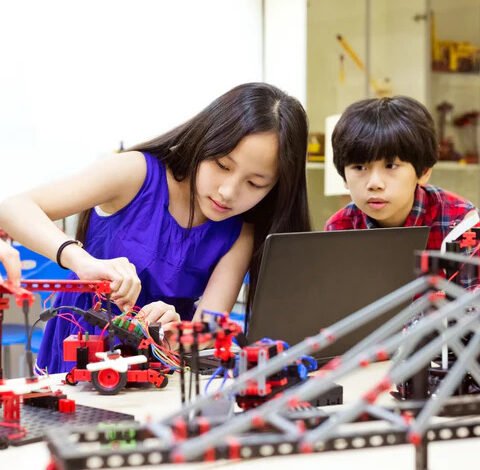7 Ways to Raise Independent Thinkers

As parents, we pour love, energy, and care into creating a nurturing home environment for our children. But one of the most important roles we play is preparing them for the outside world, a world full of challenges, choices, and uncertainties.
The most powerful tool we can equip our children with is independent thinking, the ability to form their judgments, trust their instincts, and stand by their values, even in the face of peer pressure or misinformation.
But with conventional education systems, especially the CBSE curriculum, often emphasizing rote learning over critical thinking, how do we nurture this essential skill at home?
Here’s why independent thinking matters and how you can start building it from the ground up.
Why Independent Thinking Is Essential
a. Boosts Problem-Solving Abilities
From resolving playground conflicts to figuring out how to open a stubborn pencil box, children constantly face micro-challenges. Independent thinkers feel empowered to tackle this head-on, learning when to persist and when to seek help, a life skill that stays with them well into adulthood.
b. Teaches Smart Information Filtering
In a digital-first world overloaded with content, children need the ability to question, reflect, and think critically. Independent thinking helps them evaluate sources, spot misinformation, and form balanced perspectives.
c. Builds Confidence and Leadership
Children who trust their thinking are more likely to speak up, take initiative, and lead with self-assurance. Independent thought lays the foundation for strong self-esteem, resilience, and leadership skills.
d. Fosters Grit and Motivation
Independent thinkers aren’t afraid of failure. They’re persistent, curious, and willing to try again. They understand that mistakes are part of the learning process, not something to be feared.
7 Practical Ways to Encourage Independent Thinking
1. Assign Age-Appropriate Chores
Simple tasks like making the bed or putting toys away teach responsibility and foster problem-solving. For older children, involve them in cooking or organizing spaces, and give them ownership.
2. Introduce Diverse Perspectives Through Reading
Expose your child to stories that challenge stereotypes and explore different cultures and histories.
Great reads include:
- Good Girls Don’t Make History (Ages 10+)
- Lift-the-flap Q&A about Racism (Ages 7–9)
-
This Is My Dad or House of Many (Younger children)
3. Encourage Independent, Imaginative Play
Unstructured play stimulates creativity and decision-making. Try resources like Unplugged Play: Grade School to move beyond screen time and encourage pretend scenarios and critical thought.
4. Inspire Them to Write
Whether it’s a poem, a story, or a journal, writing helps children articulate their inner world and make sense of their experiences. Fun stationery and writing prompts can make this activity more exciting.
5. Keep Curiosity Alive Through Conversation
Answer your child’s questions thoughtfully and invite theirs in return. Respectfully allow disagreements, as this builds confidence in expressing and defending their views.
6. Broaden Their Horizons
Encourage your child to interact with peers from different backgrounds. Travel, cultural events, and community interactions teach children that there are multiple valid ways to think, live, and be.
7. Let Them Make Mistakes
This may be the hardest but most essential step. Allow your child to fail without fear or shame. Encourage effort, guide without hovering, and create a safe space for trial and error.
Conclusion
Our instinct is to protect our children to guide every step, correct every error, cushion every fall. But independence isn’t built that way.
By stepping back and offering space, while still being their safe place, we help our children discover their voice, make their own choices, and become confident, capable individuals ready to take on the world.
It’s not just about preparing them for school or exams. It’s about preparing them for life.





